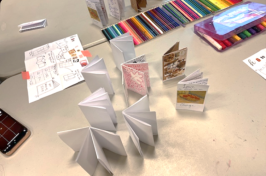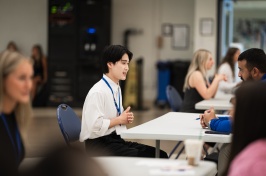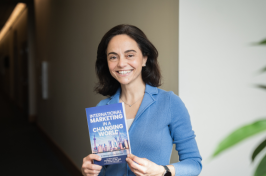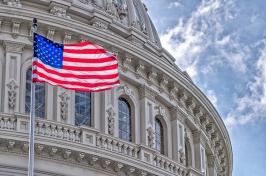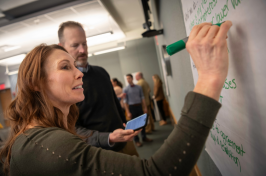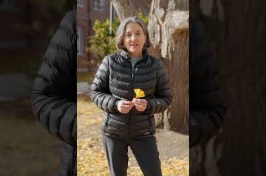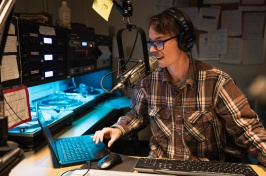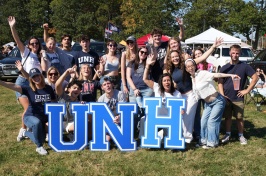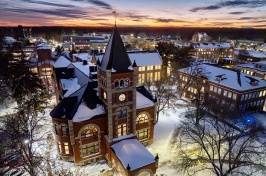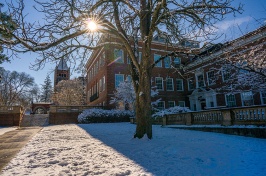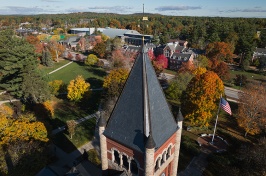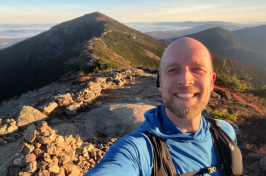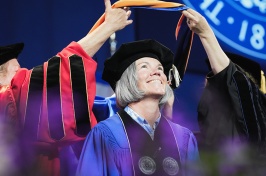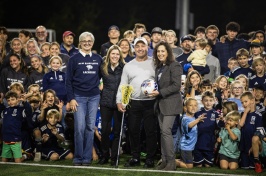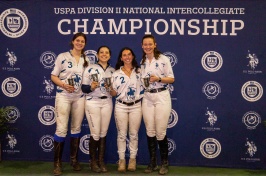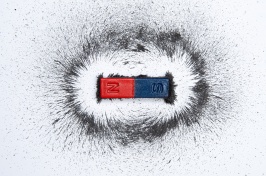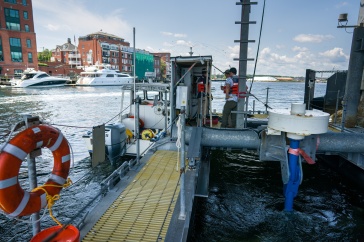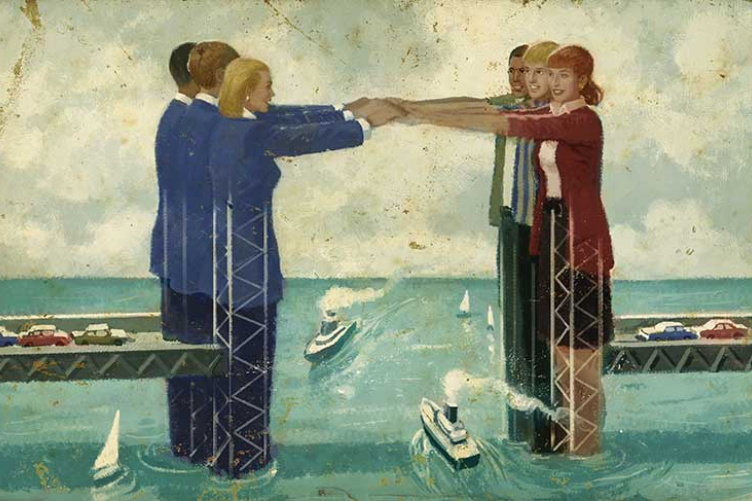
Illustration by Anthony Freda
When Chris Misavage, a middle school math and science teacher, took a job at Wentworth Elementary in rural northern New Hampshire, the community was in crisis. The school’s principal had been fired, almost the entire staff was new, and families’ confidence was shaken. As much as multiplication tables and lab reports, Misavage saw his mission as helping the school rebuild trust with its students, parents and the community. When he learned about a middle school science curriculum called SPIRALS (Supporting and Promoting Indigenous and Rural Adolescents’ Learning of Science), developed by UNH and its Cooperative Extension 4-H program in North Conway, it piqued his interest.
“I read through it and thought, ‘yes, this is exactly what we need’,” Misavage remembers. “It’s a science curriculum that has students reach out to their community and learn what makes their town sustainable. I knew the community piece was important, especially at that time in Wentworth, so we decided to go for it.”
“Community engagement looks at questions in their real-world context: their cultural relevance, the barriers and complexities that come into play around why and under what conditions students learn science.”
Since the 1990s, UNH has been behind programs like SPIRALS that engage with partners in New Hampshire and beyond to develop realistic solutions for real-world problems. “Engagement is built into the fabric of our identity as a land, sea and space-grant university,” says Eleanor Abrams, the UNH lead for SPIRALS as well as a professor in the department of education and executive director of the office of the senior vice provost for engagement and academic outreach. And while the value of SPIRALS to Misavage and his students might be obvious — an engaging and relevant take on science, access to the expertise of UNH researchers — the partnership makes critical contributions to the university as well.
Abrams’ work has long focused on the ways cultural context influences and motivates rural and indigenous students in the sciences — academic questions to which Misavage’s students provide essential insight. “Community engagement looks at questions in their real-world context: their cultural relevance, the barriers and complexities that come into play around why and under what conditions students learn science,” she explains. “It’s a much more challenging way of answering a question, but the answer that’s reached is also more robust and relevant.”
A Better Way to Nurture Science Learning
Funded through a grant from the National Science Foundation (NSF), SPIRALS uses community-based science to teach ecology along with sustainability to students at the K-12 level. In Wentworth, Misavage’s middle schoolers pick a local business, examine why — and in what ways — that business is sustainable, and then present an oral report on their findings to the community. Last year, they selected a general store and the local snowmobile club, and were fascinated to discover the economic and environmental impact of both organizations on their community. In turn, “The snowmobile club and store owner were amazed and happy we were interested in them,” Misavage says. “It really was the right way to rebuild trust.”
SPIRALS has also helped indigenous students on Hawaii’s Leeward Coast, a rural community in Oahu, better understand science by framing it in the context of their culture. “Indigenous kids tend to shy away from science because they don’t see the relevance in their lives,” says Daniel Lipe, a project specialist in the University of Hawaii’s Native Hawaiian Science & Engineering Mentorship Program. “We want them to understand that, through their cultural knowledge, they already know what sustainability is and how it affects their lives.”
“The discoveries we made wouldn’t have been possible without the contributions of the entire team — faculty, community partners and students. Working together, we’ve learned so much more about community-based science learning and how it affects students living in rural and indigenous areas than we would have relying on just our academic research here at UNH.”
Lipe and colleague professor Margie Maaka customized the SPIRALS curriculum to enable elementary and middle school students to draw connections between solar power and a Polynesian god named Maui, who controls the sun’s progress across the sky. “A big message of the story is how to use the sun’s energy. Hawaiian kids understand that,” Lipe says. The students learned about the solar panels on the building where their program met and collected data about the building’s other sustainable features, including energy-efficient light bulbs and non-water toilets, and presented their findings to center staff. “These explorations are powerful for our students because they’re learning that Hawaiian culture is grounded in a sophisticated body of scientific ways of knowing and doing that date back thousands of years,” Maaka adds.
Abrams says she and her research team learned as much as their many partners did from the process — knowledge they’ve subsequently used to develop better and more accurate research methods that can be extrapolated to a broader community of science learners. “The discoveries we made wouldn’t have been possible without the contributions of the entire team — faculty, community partners and students,” Abrams says. “Working together, we’ve learned so much more about community-based science learning and how it affects students living in rural and indigenous areas than we would have relying on just our academic research here at UNH.”
A Team Approach To Preventing Sexual Violence
Julie Williams, the senior vice provost for engagement and academic outreach, says the dynamic Abrams describes is the quintessence of community engagement. “Engagement is all about mutually beneficial partnerships,” she says. “Whether it’s programs like SPIRALS or the work of centers like the Joan and James Leitzel Center for Mathematics, Science and Engineering Education or professors in our English department partnering with public schools’ writing programs, to name just a few of the initiatives with which we are involved, the work we do isn’t only about contributing our knowledge to a particular problem or question. It’s about how we effectively engage with our local, national or international partners to make a difference in the world.”
Perhaps the most visible UNH/community collaboration making a difference in the world is the Prevention Innovations Research Center (PIRC), which has been recognized internationally for its research on violence and sexual assault against women and its prevention strategies and programs that address the causes of sexual and relationship violence. While it’s best known for a pair of intervention programs — Bringing in the Bystander and Know Your Power — that are currently used by some 600 colleges and universities in the United States and beyond, PIRC co-directors Sharyn Potter and Jane Stapleton say their work is anything but one-way outreach. “We need everyone in this field’s unique talents to solve the problems of violence and sexual assault,” Potter says. “I think our collaborations naturally go along with the university’s land-grant mission.”
“The work we do isn’t only about contributing our knowledge to a particular problem or question. It’s about how we effectively engage with our local, national or international partners to make a difference in the world.”
Indeed, PIRC’s partnerships stretch from the local level all the way up to the White House. Locally, the center fulfills a key role with the New Hampshire Coalition Against Domestic and Sexual Violence (NHCADSV) evaluating its programs and the effectiveness of staff or partner trainings — critical knowledge for the agency. “We are incredibly fortunate to have nationally recognized leaders in violence prevention right down the street,” says NHCADSV executive director Lyn Schollet. “Their evaluation of our work allows us to modify presentations or training. We don’t have capacity to do that ourselves.” In 2014, PIRC was tapped as one of just four university programs nationwide to contribute to a presidential blue ribbon panel on research into ways to end campus sexual assault. Potter, Stapleton and their staff also partner with the New Hampshire Attorney General’s office, the New Hampshire Department of Justice and state and local law enforcement to collaborate on programming and prevention strategies that are effective, realistic and rooted equally in campus culture and state law.
To that end, the center’s newest effort is a mobile phone application, developed in partnership with the NH Sexual Assault Resource Team (SART). Troubled by the realization that, while the state had a range of resources for assault victims and their supporters, no one quite knew how to get them into students’ hands, SART coordinator and former state trooper Kathy Kimball turned to PIRC for advice. Potter and Stapleton tapped students in the UNH-Manchester STEM Discovery Lab and solicited grants from the NH Charitable Foundation and other groups to create uSafeNH, a free application that provides location-specific assault support resources to students at colleges and universities across the state. “I asked Sharyn and Jane, ‘would you be interested in developing something like this?’ and they brought people together to discuss it,” Kimball says. “PIRC took an idea I had been chewing over for a while, marshaled the resources and made it a reality.”
A Living Bridge
As the uSafeNH project illustrates, meaningful community participation often extends beyond physical involvement to include the generation of ideas, contributions to decision-making and sharing of responsibility. Another project that exemplifies this level of involvement is the so-called “Living Bridge,” a collaboration between professors in the College of Engineering and Physical Sciences and a host of partners — including the New Hampshire Department of Transportation (NHDOT), local K-12 educators, New Hampshire Fish and Game, the New Hampshire Port Authority and the city of Portsmouth — to consider how Portsmouth’s Memorial Bridge might be used to generate a variety of data, from weather and tidal currents to fish migration patterns and water turbidity.
Built in 1923 to connect Portsmouth and Kittery, Maine, across the Piscataqua River, the Memorial Bridge was closed and dismantled in 2011 due to structural issues. When the bridge reopened in 2013 following engineering improvements that increased its overall safety and durability, associate professor of civil engineering Erin Bell saw the opportunity to create smart, user-centered, sustainable infrastructure. Her first taste of the project’s potential came the day ocean and mechanical engineering colleague Ken Baldwin strolled into her office. “Ken said, ‘they’re taking down the Memorial Bridge. I want to hang a turbine on the new bridge and I heard you’re the bridge lady’,” Bell remembers.
“We want to catch the public sense of inquiry about the bridge by providing people with new information.”
Working with an advisory group of state and local partners, Bell, Baldwin and other UNH engineering faculty presented their proposal for the Living Bridge at various community meetings. Last summer, they installed sensors along the bridge to provide data on everything from the status of the bridge’s health to traffic, weather, sea level and tidal information. There’s a three-dimensional model of the bridge that will help NHDOT review data about the bridge’s condition, and pedestrians can scan QR codes on informational placards along the bridge’s bumpouts and walkways to get a live snapshot of bridge data.
In October, Baldwin’s water turbine was installed on a 40-by-18-foot platform underneath the bridge. Instruments on the platform collect data on tides, turbidity and salinity as well as chlorophyll and oxygen levels in the water, and eventually tidal energy created by the turbine will power Bell’s sensors. Expanding the initial scope of the project, Nashua-based Lite Enterprises, Inc. is testing two ultraviolet lights adjacent to the platform to identify fish species and deter them from swimming into the equipment.
In a different way than SPIRALS, the Living Bridge project also offers an opportunity to engage K-12 students in science learning. North Hampton School eighth grade teachers Dana Babyak and Alison Boudreau, who serve on the Living Bridge advisory committee, plan to use data from the project to bring engineering and physics concepts like load and buoyancy to their classrooms. Their students have already visited the bridge, spoken with graduate engineering students and researchers and viewed various data-collecting instruments. The Living Bridge was recently featured in the NSF’s Science Nation online magazine and Bell is heartened by public interest in general about the project. “We want to catch the public sense of inquiry about the bridge by providing people with new information,” she says.
Solving the Puzzle
Back on campus, Williams and Abrams say the community interest Bell describes is a critical piece of what drives their work — and the university as a whole. “As an academic institution, we have key areas of strength, and the societal problems we can help with are often best addressed by engaged researchers who understand how to partner with communities,” Williams says.
Abrams notes that today’s students expect and are excited by the opportunity to engage with and learn alongside faculty and staff who collaborate with external partners. “The partners with whom we enter into this work enrich and enhance our understanding of complex issues, provide real-world experience for our students and make a meaningful difference,” she says.
Abrams and Williams both agree that community-engaged universities like UNH magnify their public value to the region, the nation and the world. They also believe that this kind of collaborative approach will significantly enhance student learning outcomes and scholarship. “Nothing is more satisfying than working with community partners to help unlock and solve a societal puzzle that is nuanced and complicated,” Williams says.
Originally published in UNH Magazine Winter 2017 Issue
-
Written By:
Debbie Kane | Freelance Writer

